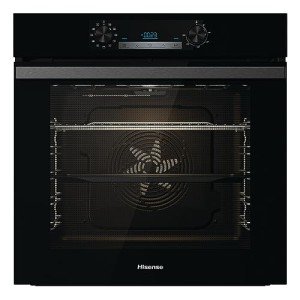Self-Cleaning Oven Maintenance: Ensuring Longevity and Optimal Performance
Self-cleaning ovens have actually revolutionized kitchen maintenance, allowing users to clean their ovens with minimal effort. However, even with the benefit that self-cleaning features provide, regular maintenance is important to ensure the oven operates effectively and lasts for several years. This short article offers a comprehensive guide to self-cleaning oven maintenance, consisting of necessary tips, benefits, and responses to often asked questions.
Understanding Self-Cleaning Ovens
Before diving into maintenance practices, it's important to comprehend how self-cleaning ovens work. These ovens make use of high temperature levels-- around 800 to 1,000 degrees Fahrenheit (427 to 538 degrees Celsius)-- to incinerate food residues, grease, and grime. After the cycle, users can just clean away the ashes. Most self-cleaning modes take several hours but offer a deep tidy that is difficult to attain through conventional approaches.
Kinds Of Self-Cleaning Ovens
There are primarily 2 types of self-cleaning innovations:
- High-Temperature Cleaning: Involves warming the oven to extreme temperatures to burn away residues.
- Steam Cleaning: Uses wetness and lower temperatures to loosen up grime and residue, making it much easier to clean away.
Each type has its pros and cons, and the option frequently depends upon user preferences and the severity of dirt buildup.
Benefits of Self-Cleaning Ovens
Self-cleaning ovens provide various benefits, including:
- Convenience: Minimal effort is required from users to attain a tidy oven.
- Efficacy: Strong heat destroys a majority of residues and odors, leading to a significantly cleaner oven.
- Time-Efficiency: Reduces the time invested scrubbing and scraping by hand.
- Reduced Need for Harmful Chemicals: Many self-cleaning ovens do not require severe chemicals, which is better for health and the environment.
Maintenance Tips for Self-Cleaning Ovens
Preserving a self-cleaning oven may seem uncomplicated, but attention to information is essential for optimal performance. Below are essential maintenance tips:
1. Routine Cleaning
- Tidy Spills Promptly: Wipe up any spills as soon as they occur. just click the up coming internet site limits the accumulation between self-clean cycles.
- Usage Appropriate Cookware: Avoid putting items that can shatter at heats.
2. Perform Self-Clean Cycles Judiciously
- Limitation Frequency: Regular use of the self-clean feature can use down the oven's elements. Goal for once every few months or as required.
3. Keep the Oven Door Seal
- Check the Door Gasket: Check the rubber seal around the oven door for any wear or tears. A damaged seal can cause heat loss during the self-cleaning cycle.
4. Clean the Oven's Interior
- Remove Racks: Take out oven racks before starting a self-clean cycle as their surface can be affected by heats.
- Clean Down the Interior: Use a damp fabric to wipe down the interior surface areas regularly.
5. Avoid Abrasive Cleaners
- Mild Cleaning Solutions: Use mild detergents and non-abrasive sponges for routine cleaning to prevent scratches on the door and interior surfaces.
6. Schedule Professional Maintenance
- Yearly Check-ups: Have an expert service technician examine and service the oven as soon as a year to make sure all elements are functioning properly.
Maintenance Checklist for Self-Cleaning Ovens
| Task | Frequency | Notes |
|---|---|---|
| Without delay clean spills | As required | Prevents hard buildup |
| Self-clean cycle | Every 3-6 months | Usage sparingly to lengthen oven life |
| Check door seal | Month-to-month | Change if harmed |
| Tidy oven interior | Regular monthly | Includes grease build-up |
| Professional maintenance | Yearly | Guarantees all parts are operating well |
FAQs about Self-Cleaning Oven Maintenance
Q1: How frequently should I utilize the self-clean feature of my oven?
A: It's typically advised to utilize the self-clean function every 3 to 6 months, depending on use. Avoid utilizing it too regularly to avoid wear on internal parts.
Q2: Can I clean my oven racks in the self-clean cycle?
A: No, it is advised to remove the racks before starting the self-cleaning process, as high temperature levels can damage their surface and warp them.
Q3: What should I do if the self-cleaning cycle did unclean properly?
A: After the cycle finishes, if residue remains, clean down the interior with a moist cloth. If issues continue, look for obstructed vents or mechanical concerns that may require expert help.
Q4: Is it safe to leave the oven unattended during a self-clean cycle?
A: While it's generally safe, it is prudent to stay close by. If you have any doubts, consult the owner's manual for particular safety suggestions.
Q5: Can I utilize industrial oven cleaners in my self-cleaning oven?
A: It is not recommended to utilize industrial oven cleaners, as they can harm the oven's surface. Moderate soap and water are normally adequate for routine maintenance.
Self-cleaning ovens are a cherished possession in modern kitchens, offering users the convenience of a clean oven without the comprehensive labor that traditional techniques need. By adhering to proper maintenance practices, users can ensure their self-cleaning ovens stay effective and efficient for several years to come. Regular cleaning, prompt maintenance, and the judicious usage of the self-clean function will cultivate durability in your oven, allowing you to enjoy problem-free cooking and baking.

